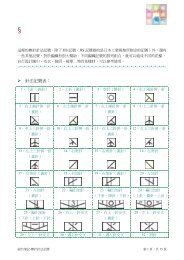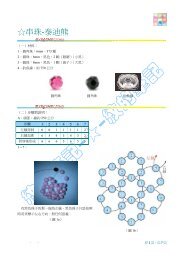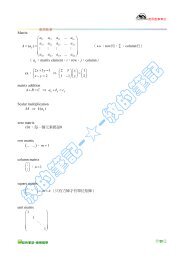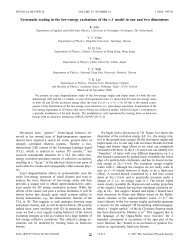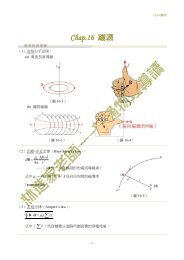Chapter 22 Materials Selection and Design Considerations
Chapter 22 Materials Selection and Design Considerations
Chapter 22 Materials Selection and Design Considerations
Create successful ePaper yourself
Turn your PDF publications into a flip-book with our unique Google optimized e-Paper software.
W134 • <strong>Chapter</strong> <strong>22</strong> / <strong>Materials</strong> <strong>Selection</strong> <strong>and</strong> <strong>Design</strong> <strong>Considerations</strong><br />
for this steel alloy, <strong>and</strong> that ty � 0.6sy. Note: heat treatment of the 4340 steel is<br />
discussed in Section 10.8.<br />
<strong>Materials</strong> for Integrated Circuit Packages<br />
<strong>22</strong>.D11 You have been asked to select a metal alloy<br />
to be used as leadframe plate in an integrated<br />
circuit package that is to house a<br />
silicon chip.<br />
(a) Using the database in Appendix B list<br />
those materials that are electrically conductive<br />
have linear<br />
coefficients of thermal expansion of<br />
between <strong>and</strong> 10 � 10<br />
<strong>and</strong> thermal conductivities of greater than<br />
100 W/m-K. On the bases of properties <strong>and</strong><br />
cost, would you consider any of these<br />
materials in preference to those listed in<br />
Table <strong>22</strong>.6? Why or why not?<br />
�6 (�C) �1 2 � 10 ,<br />
�6<br />
[s 7 10 � 106 (�-m) �1 ]<br />
(b) Repeat this procedure for potential insulating<br />
leadframe plate materials that<br />
must have electrical conductivities less<br />
than as well as coefficients<br />
of thermal expansion between 2 � 10�6 10�10 (�-m) �1 ,<br />
<strong>and</strong> 10 � 10 <strong>and</strong> thermal con-<br />
�6 (�C) �1 ,<br />
ductivities of greater than 30 W/m-K. On<br />
the bases of properties <strong>and</strong> cost (Appendix<br />
C), would you consider any of the materials<br />
listed in Appendix B in preference<br />
to aluminum oxide? Why or why not?<br />
<strong>Design</strong> Questions<br />
<strong>22</strong>.D12 Perform a case study on material usage<br />
for the compact disc, after the manner of<br />
those studies described in this chapter.<br />
Begin with a brief description of the<br />
mechanism by which sounds are stored<br />
<strong>and</strong> then reproduced. Then, cite all of the<br />
requisite material properties for this application;<br />
finally, note which material is<br />
most commonly utilized, <strong>and</strong> the rationale<br />
for its use.<br />
<strong>22</strong>.D13 One of the critical components of our<br />
modern video cassette recorders (VCRs)<br />
is the magnetic recording/playback head.<br />
Write an essay in which you address the<br />
following issues: (1) the mechanism by<br />
which the head records <strong>and</strong> plays back<br />
video/audio signals; (2) the requisite properties<br />
for the material from which the head<br />
is manufactured; then (3) present at least<br />
three likely c<strong>and</strong>idate materials, <strong>and</strong> the<br />
property values for each that make it a<br />
viable c<strong>and</strong>idate.<br />
<strong>22</strong>.D14 The transdermal patch has recently become<br />
popular as a mechanism for delivering<br />
drugs into the human body.<br />
(a) Cite at least one advantage of this<br />
drug-delivery system over oral administration<br />
using pills <strong>and</strong> caplets.<br />
(b) Note the limitations on drugs that are<br />
administered by transdermal patches.<br />
(c) Make a list of the characteristics required<br />
of materials (other than the delivery<br />
drug) that are incorporated in the<br />
transdermal patch.





